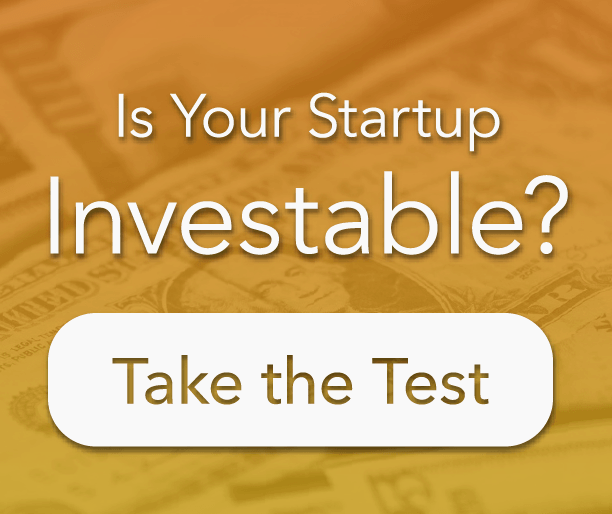
If you’re not included in an investor’s network and have never met them in person, face it – you’re a cold contact. How can you prevent your pitch from being condemned to the trash? Review this guideline before you email investors.
Everyone from individual investors to Corporate Venture Capital funds receives emails requesting startup funding. Depending on the notoriety of the investor, this could amount to anywhere from 3- 1,000 emails per week.
Now put yourself in their mindset. If you had startups flooding your inbox on a daily basis, which ones would stand out to you? What information would just be filler content? Before explaining what material you should include, you must understand the reality of cold contacts and what content is not relevant.
Emailing Cold Contacts
According to the email industry leaders MailChimp and Constant Contact, the average open rate for business emails hovers between 14% and 23% with a 2.0% click rate. Keep in mind to email a person through these platforms you must have permission to contact them by opt-in or explicit consent; otherwise, you would be violating the anti-spam laws. So in reality, the open rate from unknown emails that investors did not sign up for would be lower than these statistics with a practically non-existent response rate.
How can you prevent your email from ending up in the spam folder? Begin with two solids approaches – either message investors through their website (most will have a contact form) or ask for an introduction from someone in their network.
If you truly believe your email is a revolutionary idea eloquently stated from mouths of the startup gods, you could try to directly contact an investor…but most investors will just write off the email as another solicitation.
Find An Angel Investor Today! Click To Learn More
Another Big Turn Off for Investors? You Didn’t Do Your Homework
If this is your first time raising capital for your startup, you might overlook the fact that investors don’t just invest in any new and innovative idea. Almost all investors are industry-specific and region specific. Then they will consider if your startup fits within their funding demographic. Smaller investors may only be interested in concept or seed stage ventures who are seeking smaller amounts of capital. Other larger investment groups are looking to invest larger sums of capital into developed growth stage businesses with a viable revenue stream.
Startup Funding Rounds: The Funding Life Cycle
Also, take into account who the investor might be. Have they been in the financial industry for 40 years and prefer formal communication? Or are they a tech tycoon in their late 20’s who prefer informal communication and uses the latest industry buzz words?
Think of it this way – if you go to a hardware store looking for groceries, you’re wasting your time. If you pitch your fintech startup to an investor interested in health services, you are also wasting your time.
Time is money, so don’t waste your time (or anyone else’s).
Now before diving into what material you should include, you need to be practical about what to leave out. Different scenarios require different approaches. You’ll quickly find that your 5-minute elevator pitch could turn into a 5 paragraph email. Considering the optimal email length of an email is between 3-6 sentences, you might have already shot yourself in the foot.
Here are some tips to keep in mind before constructing your message:
-
Which emails does everyone delete first?
The one blatantly selling you something. Your self-interest is unattractive for anyone and everyone. The email should be catering to what you can do for the investor, not the other way around.
-
Keep the email short and to the point.
Cut the fluff. Only essential information should make up your email content. You can always attach additional files such as an executive summary with descriptive content to read later if they are interested.
-
Facts and figures are your friends, emotional leverage is not.
Business is business. Provide statistics and figures that validate the market viability for your business and what the projected outcome would be for at least 1-3 years. Save the tear-jerker stories for crowdfunding campaigns or for friends and family.
-
Always end with a call to action.
Be engaging. Ask a question – What is the first step you should take towards their screening process? Are they available for a conference call? Before writing your email you need to know what you want this email to lead to.
Note – Avoid including links if possible. In general, investors take great care in protecting their private information. The internet is filled with vicious malware and cybersecurity breaches, they are less likely to take the risk of clicking an unknown link from an unknown source.
Finally, the valuable content.
Now that we’ve cut the fat, there is more clarity on how to approach an email to investors. The following elements should always be included in your content.
- Problem or Pain Point
- Solution
- Traction or Market Viability
- Funding Status
- Connection to the Investor
- Call to Action
These six elements answer the essential questions an investor may immediately have about your startup. Create a situation that leaves the investor intrigued and wanting to learn more. Remember that additional details can be addressed in further conversation.
Summary
In short, understand the reality of cold emailing investors. You may have unrealistic expectations if you take the wrong approach. Do your research instead of blasting any investor email you can find. Take out any fillers get straight to the point. What makes your business worthwhile to the investor? That should be the core message if you want to create a relationship with an investor.
For more information on what Angel Investors want out of an investment, check out A Glimpse Into Thinking Like an Angel Investor









